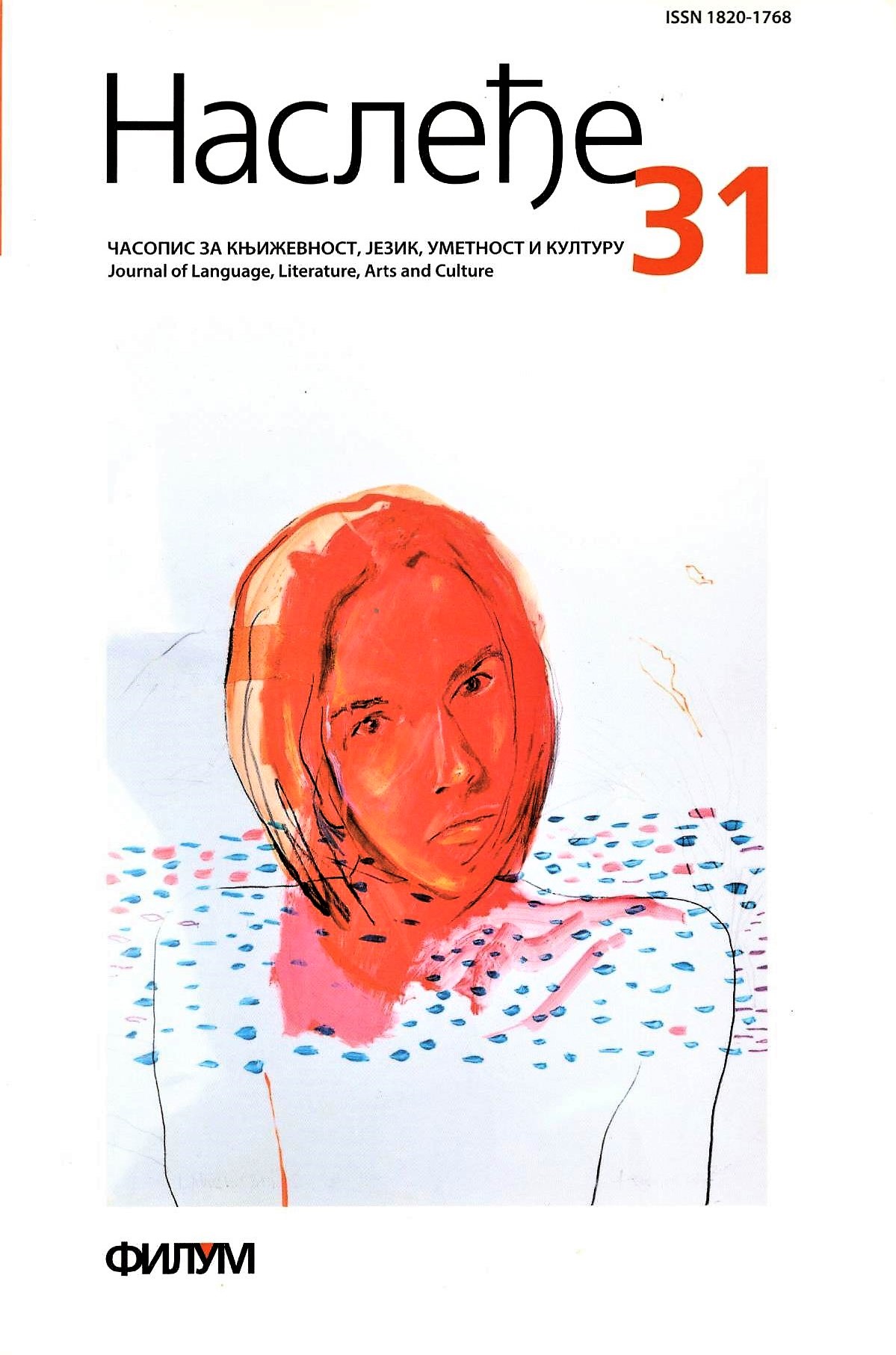ОД ИНТЕРАКЦИЈЕ И ЈЕЗИЧКОГ ПРИЛИВА ПРЕМА РАЗУМЕВАЊУ И УСМЕНОЈ ПРОДУКЦИЈИ У НАСТАВИ СТРАНОГ ЈЕЗИКА У РАНОМ УЗРАСТУ
Кључне речи:
интеракција, језички прилив, рецептивне и продуктивне вештине, млађи ученици, страни језикСажетак
Синтагма „интеракција у учионици” односи се на специфичан контекст одређен унапред детерминисаним саговорницима − наставником и ученицима, местом односно школском учионицом и постављеним циљем који се састоји у учењу/подучавању страног језика. Интеракција унутар учионице спада у групу спољашњих фактора који умногоме утичу и одређују процес раног учења. Циљ овог рада је да укаже на значај потенцијалних интеракцијских модела у настави страног језика у раном узрасту који у ограниченом временском периоду дају оптималне резултате. У том смислу је квалитет прилагођеног језичког прилива од велике важности. Његовим остваривањем кроз идеју формата у рутинским операцијама исти постаје предиспониран да као такав буде усвојен, и то најпре на рецептивном, а потом, у зависности од индивидуалних разлика међу млађим ученицима, и искоришћен у говорном чину на страном језику, односно продуктивном нивоу. Премда су интеракцијски модели у почетној настави страног језика умногоме ограничени узрасним карактеристикама млађих ученика, правилно каналисана комуникација у интеракцији и прилагођен језички прилив у великој мери могу да усмере млађе ученике ка олакшаном овладавању рецептивним и продуктивним вештинама на циљном, страном језику.
Референце
Braun 1973: R. Brown A first language: the early stages. Cambridge MA: Harvard University press, pp. 437.
Bruner 1983: J. S. Bruner Child’s talk: Learning to use the language. New York, Norton: trad.it. Il Linguaggio del bambino. Roma: Armando, 1987.
Kačari 2001: C. Cacciari Psicologia del linguaggio. Bologna: Mulino
Kameron 2001: L. Cameron Teaching Languages to Young Learners. Cambridge: Cambridge Universitty Press.
Kardona 2001: M. Cardona Il ruolo della memoria nell’apprendimento dell lingue. Torino: Utet.
Kerol 1977: J. Carroll Characteristics of successful second language learners, in M. Burt, H. Dulay, and M. Finnochiaro (eds.), Viewpoints on English as a Second Language, New York: Regents.
Čomski 1972: N. Chomsky Gramatika i um. Beograd: Nolit.
Kunan 2001: C. M. Coonan L’inglese come lingua straniera nella scuola dell’infanzia (in) Lingue straniere nella scuola dell’infanzia. Perugia: Guerra Soleil (47‒88).
Dijadori, Palermo, Tronkareli 2009: P. Diadori M. Palermo, D Troncarelli Manuale di didattica dell’italiano L2. Perugia: Guerra Edizioni.
Dimitrijević 1999: N. Dimitriijević Testiranje u nastavi stranih jezika. Beograd: Zavod za izdavanje udžbenika.
Dulej, Bert, Krešen 1982: H. Dulay, M. Burt, S. Krashen Language two. Oxford: Oxford University Press.
Elis 1994: R. Ellis The Study of Second Language Acquisition. Oxford: Oxford University Press.
Fredi 1990: G. Freddi Il bambino e la lingua. Padova‒Torino: Liviana‒Petrini.
Fredi 1994: G. Freddi Glottodidattica: fondamenti, metodi e tecniche. Torino: Libreria UTET.
Fredi 2004: G. Freddi Psicolinguistica, sociolinguistica, glottodidattica. Torino: Utet.
Gentner 1982: D. Gentner Early Acquisition of Nouns and Verbs. Stanford University.
Hedž 2001: T. Hedge Teaching ang Learning in the Language Classroom. Oxford: Oxford University Press.
Geri 1975: J, O. Garry Delayed oral practice in initial stages of Second Language Learning. In M. Burt and H. Dulay (eds.) , 1975 New Directions in Second Language Learning, Teaching, and Bilingual Education. Washington, D. C.: TESOL 89‒95.
Gas, Silinker 2008: M. S. Gass, L. Selinker Second Language Acquisition: An Introductory Course. NYU: Taylor & Francis.
Larsen−Frimen, Long 1991: D. Larsen–Freemen, M. Long An Introduction to Second Language Acquisition Research. London: Longman.
Luize 2006: C. M. Luise Italiano come lingua straniera.Torino: Utet.
Kajfeš 1999: K. Kajfeš Uvežbavanje vokabulara u nastavi stranog jezika: nazivi zanimanja. Strani jezik u osnovnoj školi. Zagreb: Naprijed.
Mekkej 2006: P. McKay Assessing Young Language Learners. Cambridge: Cambridge University Press.
Meara 1996: P. Meara The dimensions of lexical competence. In Performance and Competence in Second Language Acquisition. G. Brown, J. Williams, (eds), 35‒53. Cambridge: Cambridge University Press.
Mihaljević Djigunović 1998: J. Mihaljević Djigunović Uloga afektivnih faktora u učenju stranog jezika. Zagreb: Filozofski fakultet.
Нејшн 2001: P. Nation Learning vocabulary in another language. Cambridge: Cambridge University Press.
Paloti 1998: G. Pallotti La seconda lingua. Milano: Strumenti Bompiani.
Plan 1977: J. Plann Acquiring a Second Language in an immersion classroom. In H. D. Brown, C. A. Yorio, and R. Crymes (eds.), Teaching and Learning English as a Second Language: Trends in Research and Practice. Washington, D. C.: TESOL 213‒35.
Pika&Long 1986: T. Pica & M. Long The linguistic and conversational performance of experienced ang inexperienced teachers. In R.R. day (ed.), Taking to learn: Conversation in second language acquisition, pp. 182-199. Rowley, MA: Newbury House.
Tsui 1995: A. Tsui Introducing classroom interaction. London: Penguin.
Vilke 1999: M. Vilke Deca i učenje stranih jezika u osnovnim školama, u Strani jezik u osnovnoj školi. Zagreb: Naprijed.
Vrhovac 1999: Y. Vrhovac et al. Strani jezik u osnovnoj školi, Zagreb: Naklada Ljevak.
Vučo 2003: J. Vučo Ogledi iz lingvistike. Cetinje: Univerzitet u Crnoj Gori.






